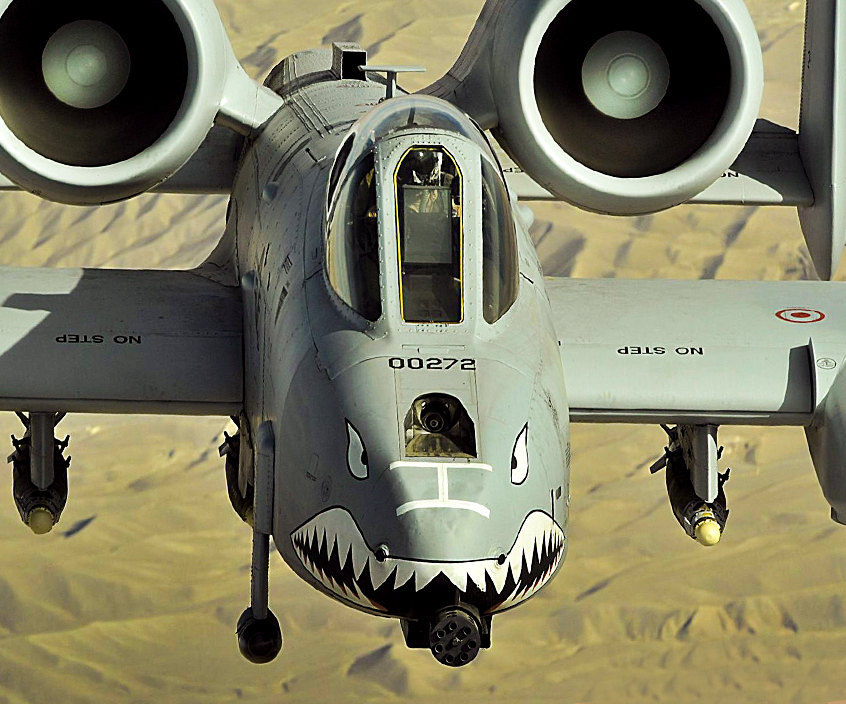
The United States Air Force only has one aircraft dedicated solely to air-to-ground support, the A-10 Warthog. Production began in 1976 and the A-10 is still active today.
Up Next: More amazing facts about the A-10
Where The Name Came From
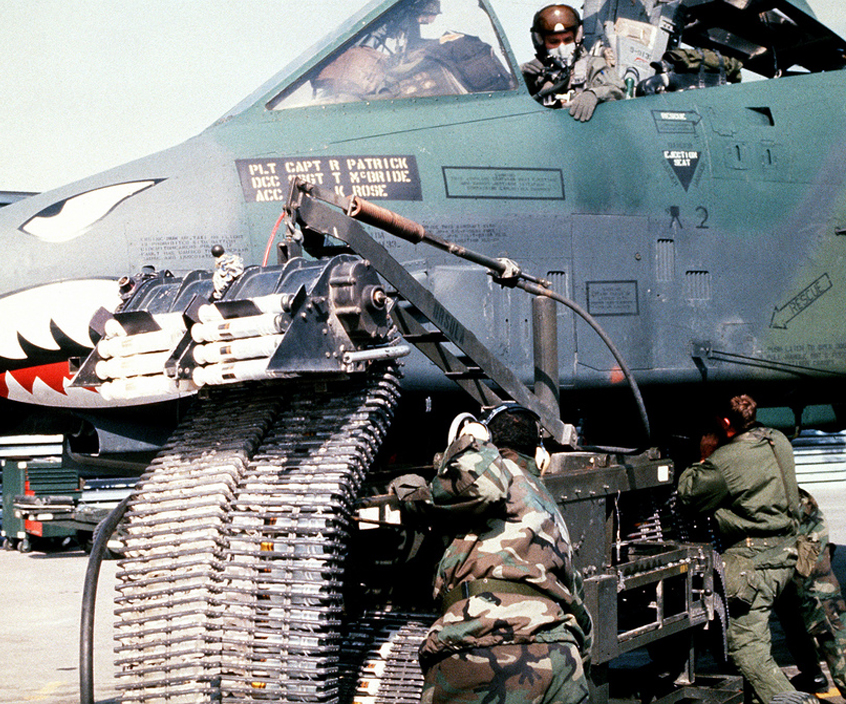
Because of it’s cumbersome appearance the A-10 was nicknamed “Warthog”.
Up Next: More amazing facts about the A-10
The Cockpit
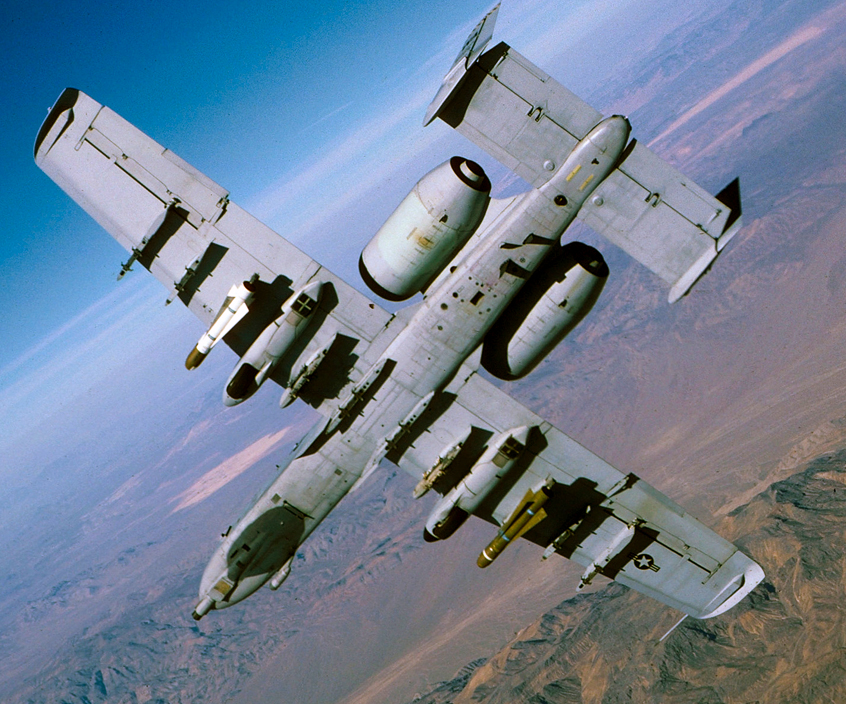
The A-10 cockpit and flight control systems are surrounded by 1,200 pounds of protective armor called the “bathtub”. It’s capable of withstanding 50-cal bullets or 23mm armor-piercing rounds.
Up Next: More amazing facts about the A-10
Heaviest Front Auto Cannon
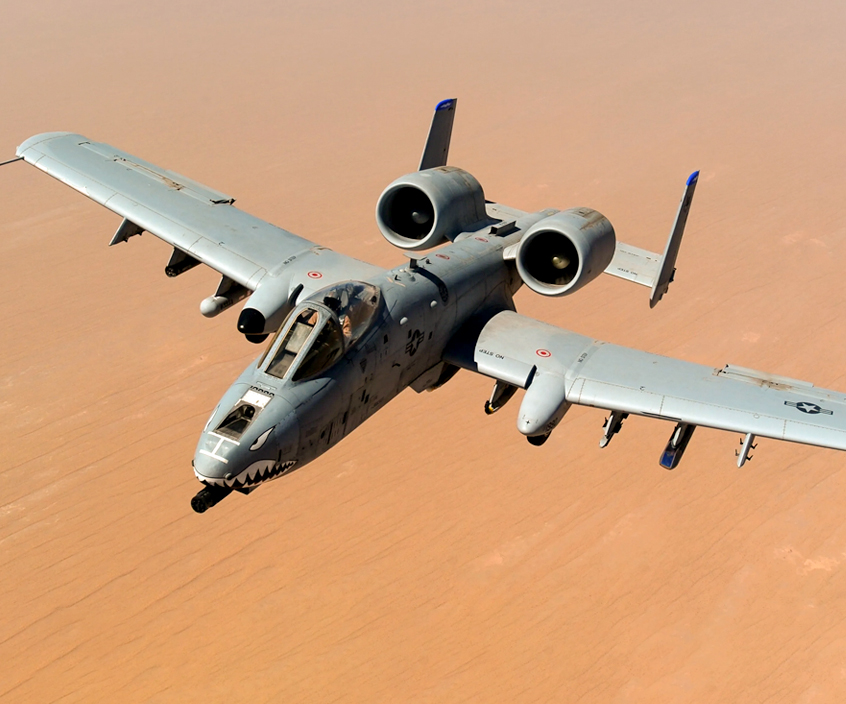
The 30 mm GAU-8/A Avenger sits in the front of the aircraft, with the barrel protruding from the nose of the A-10. It is the heaviest automatic cannon ever mounted on an aircraft.
Up Next: More amazing facts about the A-10
Gatling Gun
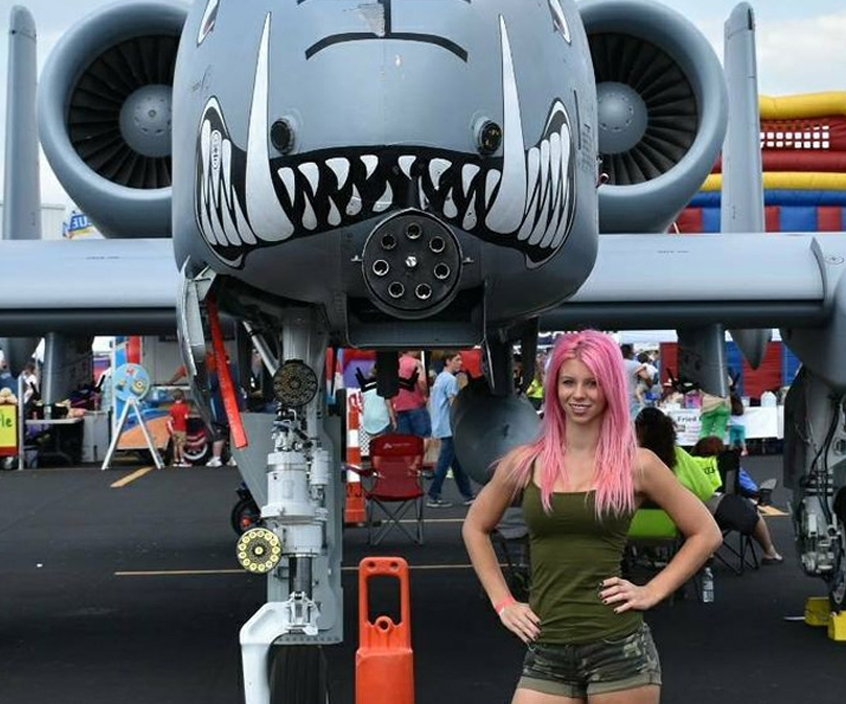
The Gatling gun accounts for 16 percent of the A-10’s weight.
Up Next: More amazing facts about the A-10
False Canopy
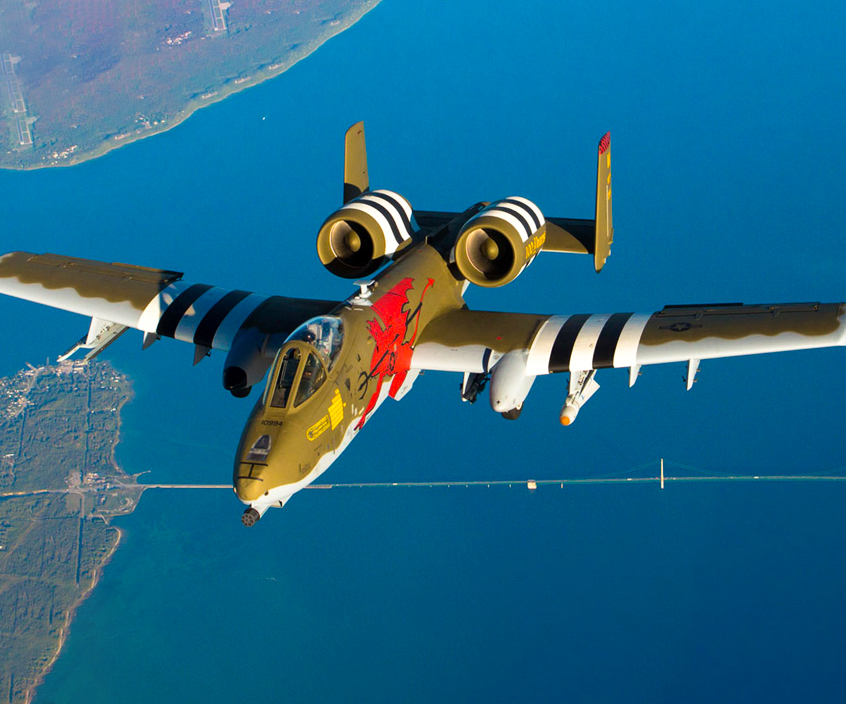
Some A-10 Thunderbolt’s have a ‘false canopy’ painted on the belly of the aircraft.
Up Next: More amazing facts about the A-10
Engine Mounting
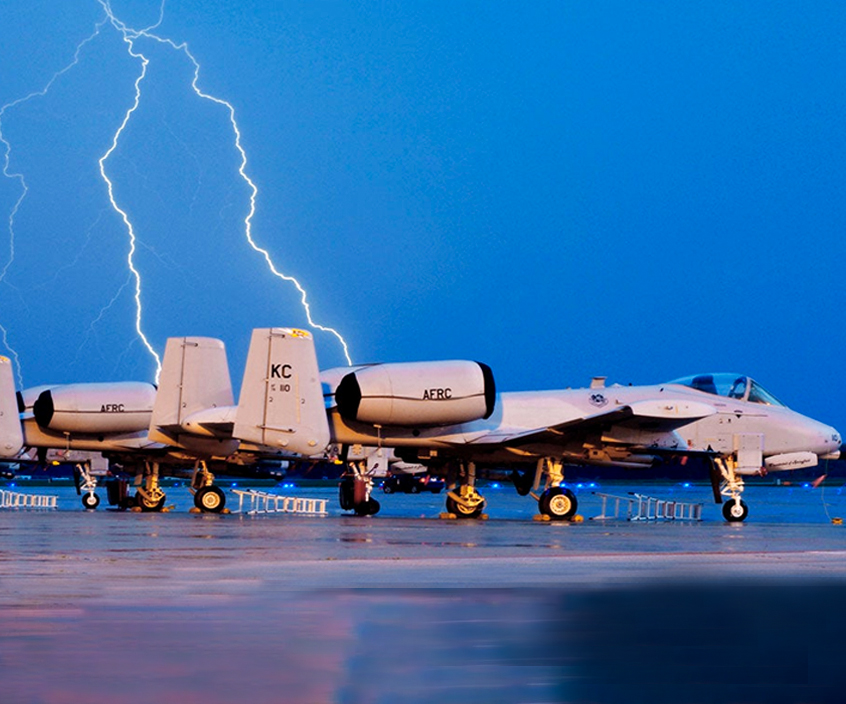
The A-10’s General Electric TF-34-GE-100 engines are mounted high, above and behind the wings. This positioning gives them protection from ground fire.
Up Next: More amazing facts about the A-10

Rounds Per Minute
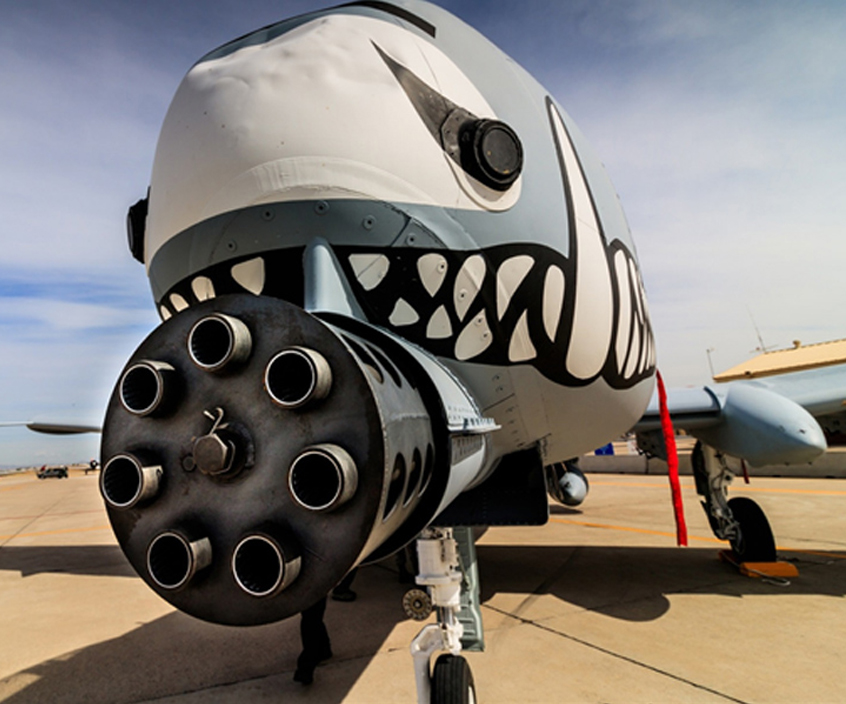
The Gatling gun is designed to fire high explosive incendiary and armor-piercing depleted uranium rounds at a rate of 3,900 rounds per minute.
Up Next: More amazing facts about the A-10

There is an A-10 Thunderbolt monster truck used by the Air Force for marketing purposes. It travels around the U.S. and has become a fan favorite at air shows.
Up Next: More amazing facts about the A-10
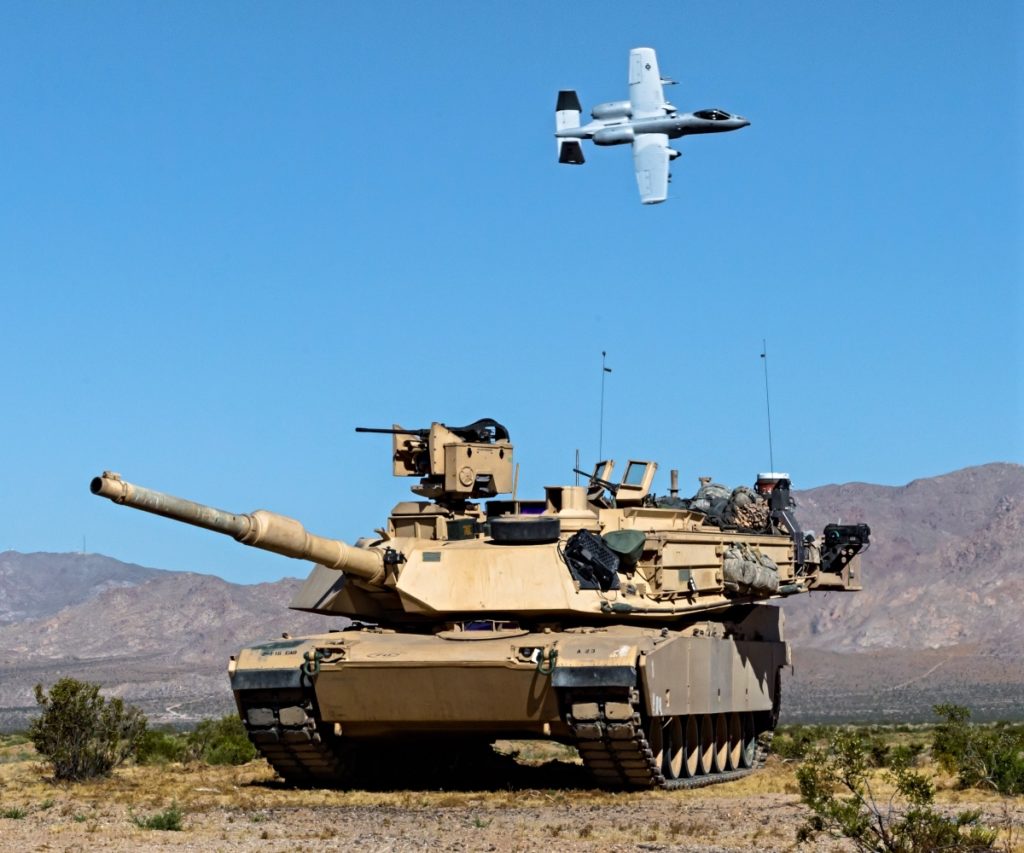
The Original Thunderbolt
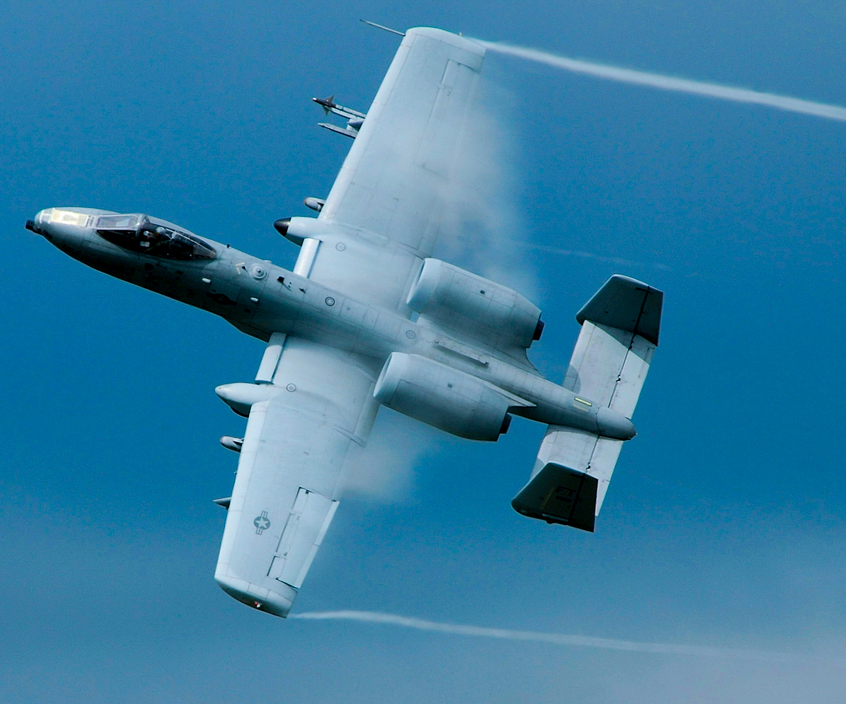
The Thunderbolt II gets its name from the P47 Thunderbolt, used in WWII. Both Thunderbolts are/were ground support aircraft.
Up Next: More amazing facts about the A-10
It Can Fly Through Lightning

It is so well armored that it can fly through super-cell thunderstorms – the Air Force uses the A-10 to monitor severe weather systems.
Up Next: More amazing facts about the A-10
Operating Capabilities
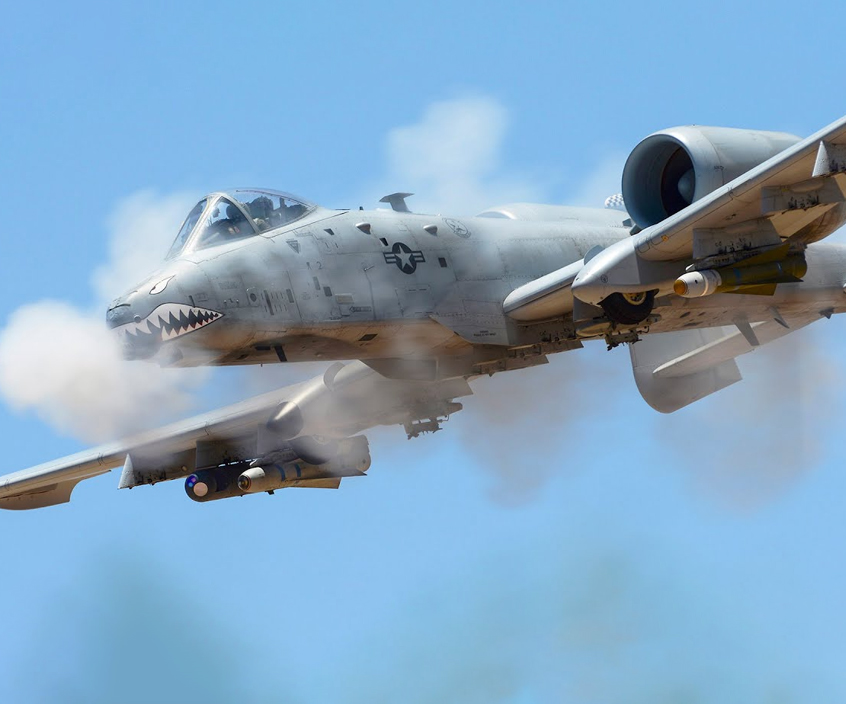
The A-10 can operate underneath 1,000-foot ceilings with 1.5-mile visibility.
Up Next: More amazing facts about the A-10
The Dragon
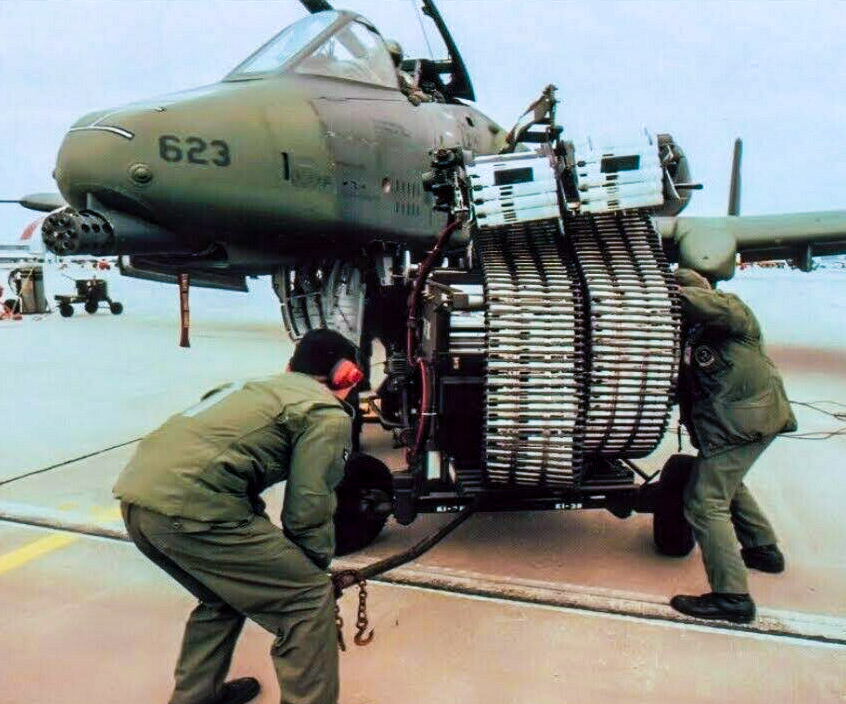
There is a special vehicle created just for loading ammunition into the A-10 Thunderbolt. It’s called “The Dragon”.
Up Next: More amazing facts about the A-10
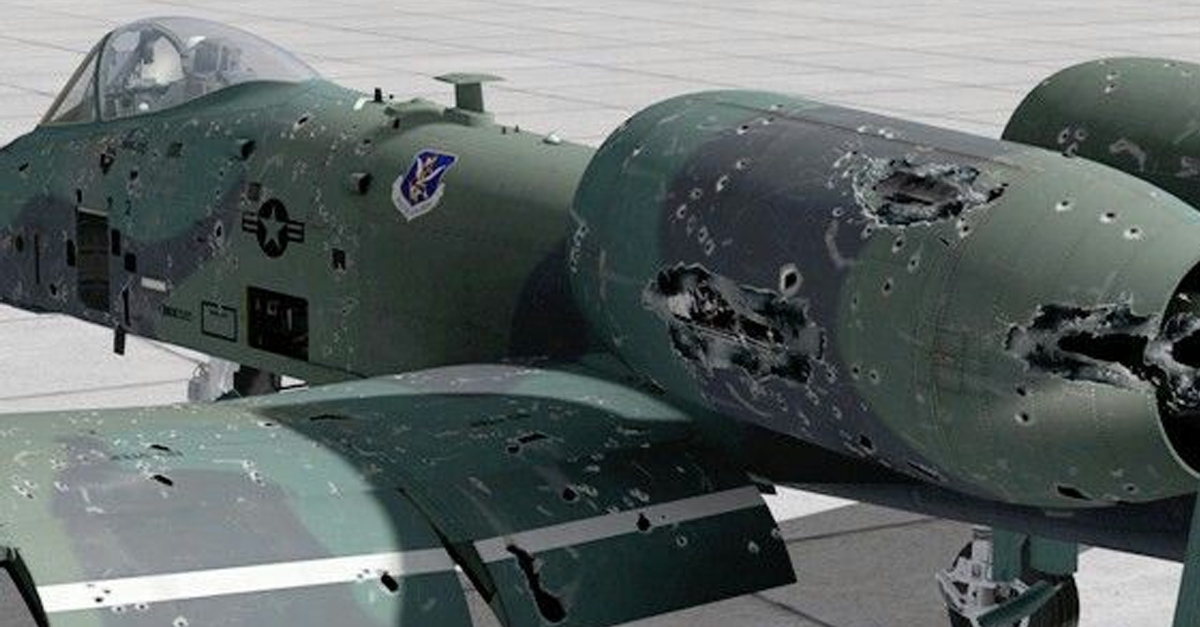
Hot Handed
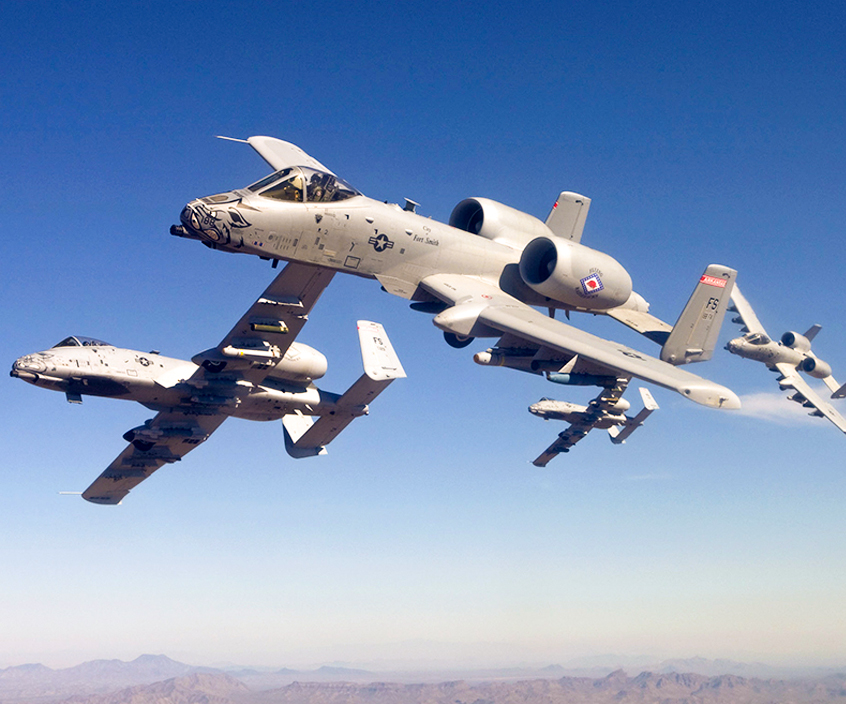
The Gatling gun heats up so fast that pilots can’t fire for more than a few seconds at a time. Doing so would overheat the barrel and render it ineffective.
Up Next: More amazing facts about the A-10
The Landing Gear

The landing gear, engines, vertical stabilizers and some other parts on the A-10 are left and right interchangeable – meaning they can operate on either side.That allows it to be serviced at a forward location and put back in combat much sooner than other aircraft.
Up Next: More amazing facts about the A-10
Take-Offs
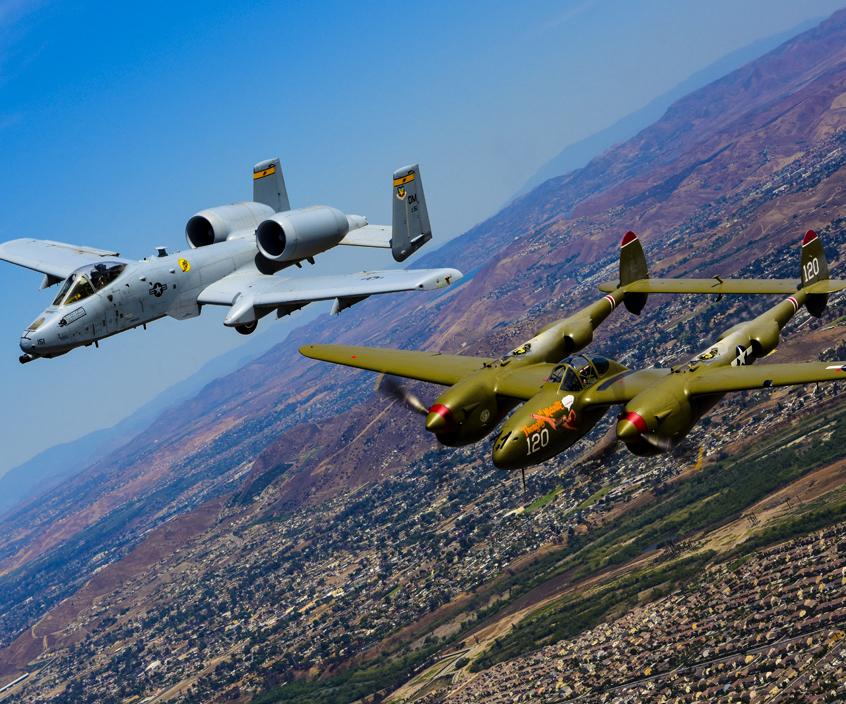
The A-10 Thunderbolt’s straight, large wings and wide wheelbase allow it to take off and land from a short runway, giving it the ability to land as close to the front line of battle as possible.
Up Next: More amazing facts about the A-10
Heavy Payload

The A-10 carries more weight in weapons than it weighs itself. The Thunderbolt weighs 12 tons and, including the GAU-8/A cannon, carries a maximum of 13 tons of armament.
Up Next: More amazing facts about the A-10
Hydraulics
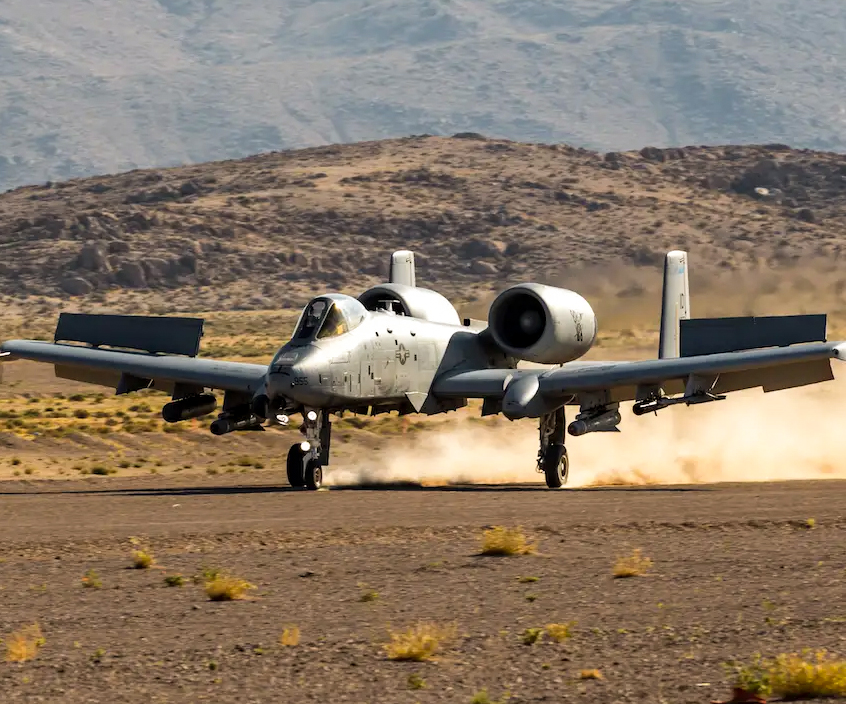
The A-10 was built to survive. The hydraulics systems are double-redundant and a backup mechanical system controls the plane if the hydraulics are lost.
Up Next: More amazing facts about the A-10
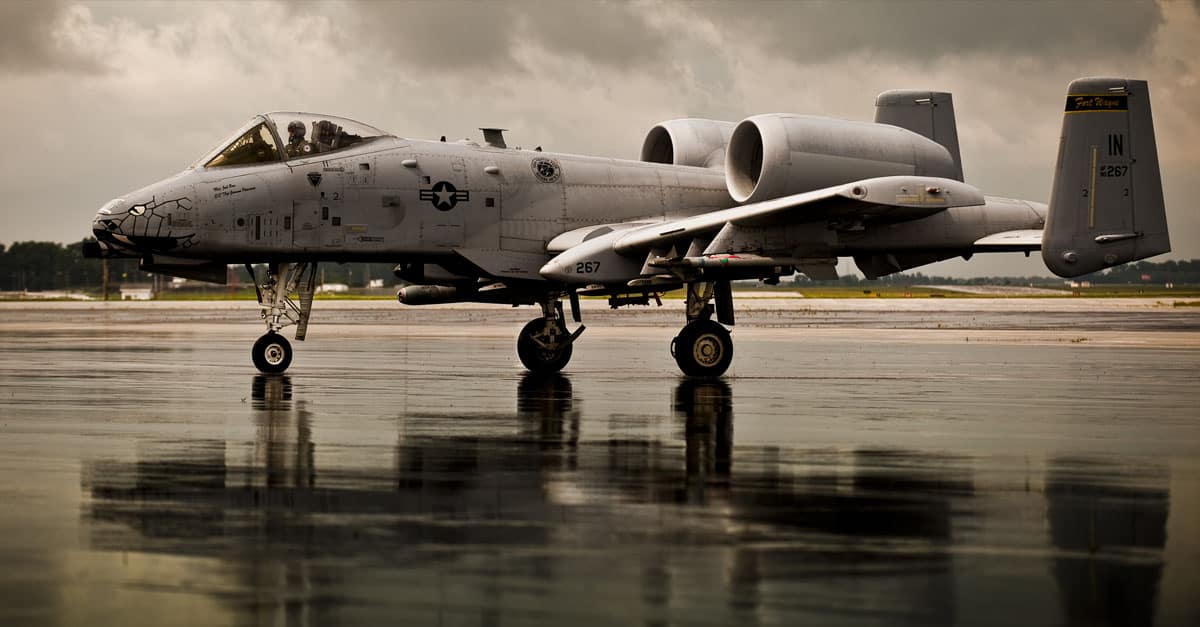
Since 1991
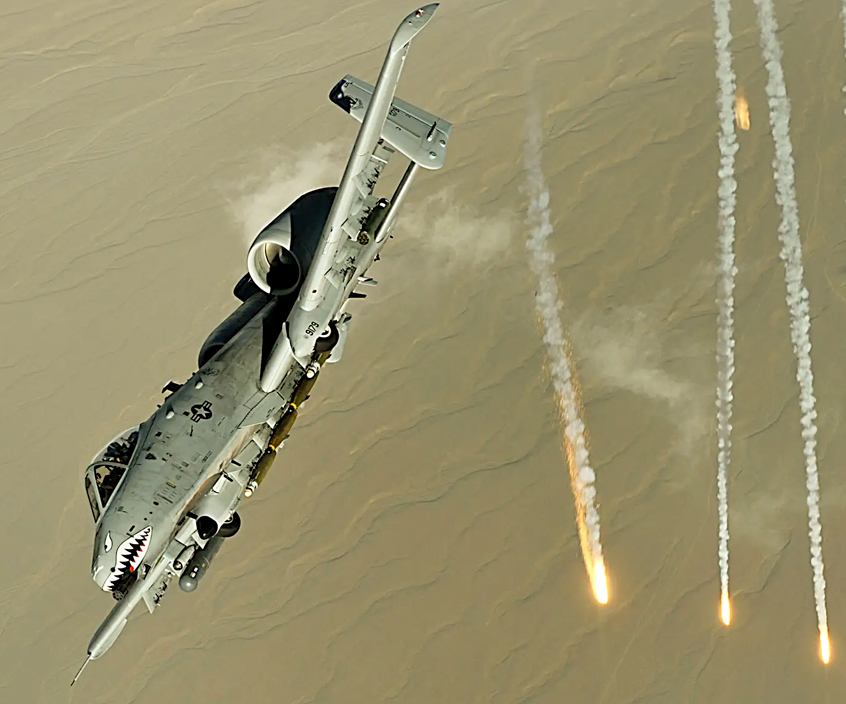
The first time the A-10 entered combat was in 1991 during the Persian Gulf War. During its service in the war the A-10 was responsible for destroying 900 Iraqi tanks, 2,000 other military vehicles and 1,200 artillery pieces in addition to two air-to-air kills.
Up Next: More amazing facts about the A-10
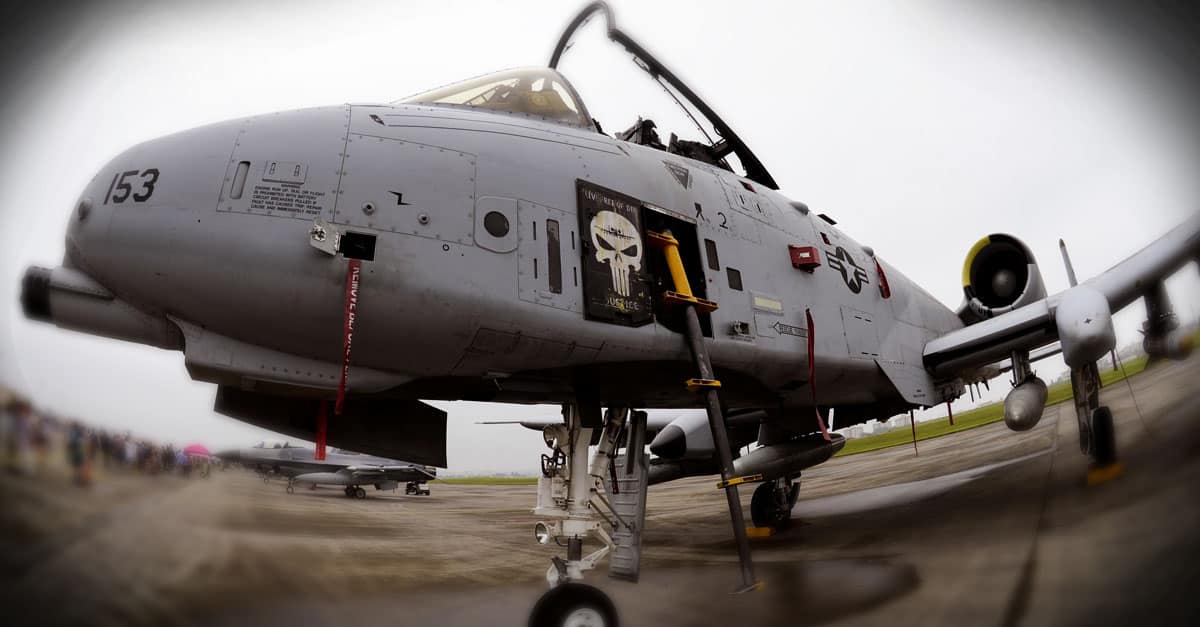
Rescue Capabilities

In 1999, an A-10 assisted in the rescue of a downed F-117 pilot in Kosovo. The A-10 provided ground support while three helicopters executed the rescue mission.
Up Next: More amazing facts about the A-10
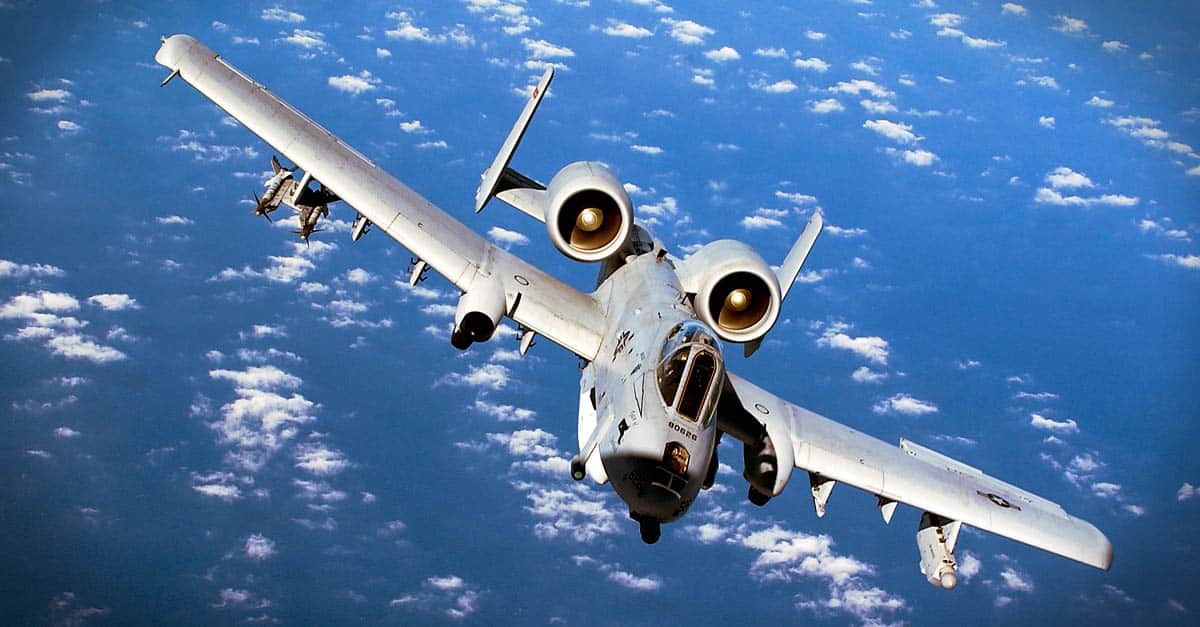
Still Going

The Air Force and the U.S. government struck a deal to keep the A-10 alive.
Up Next: More amazing facts about the A-10

Wingspan

This is definitely one of our unbelievable A-10 Warthog facts you need to know. The A-10 is almost as long as it is wide. The wingspan measures 57 feet 6 inches and it’s length measures 53 feet 4 inches long.
Up Next: More amazing facts about the A-10
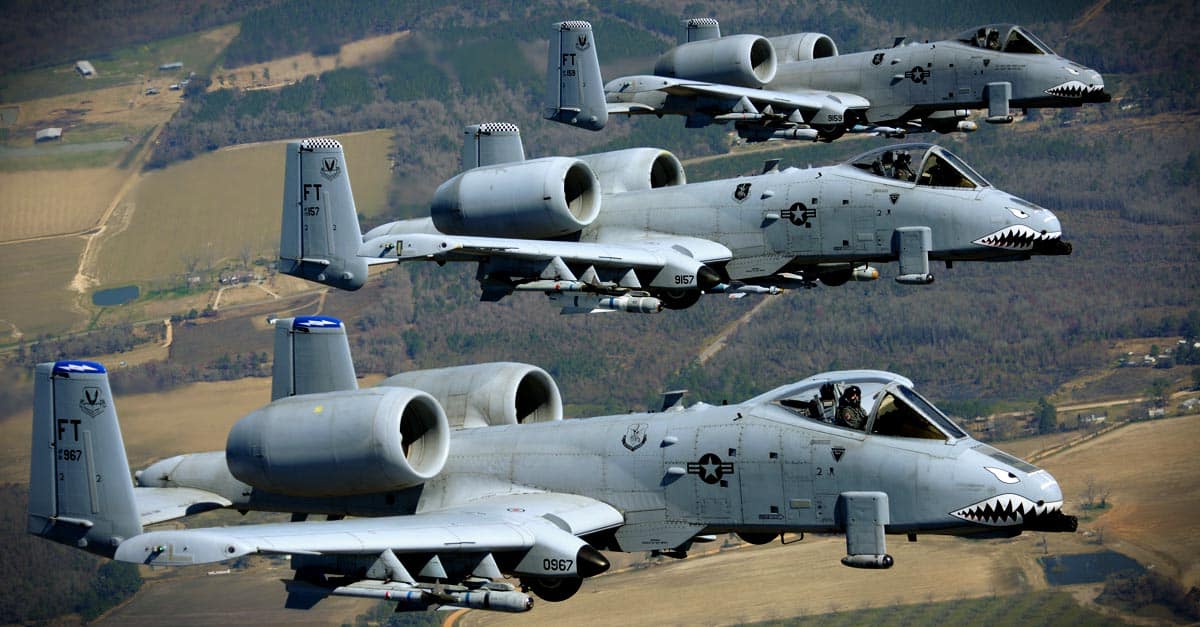
Tank Buster

One of the pieces of armament the A-10 carries is the AGM-65 Maverick air-to-ground missile. Each missile weighs 670 pounds and can destroy a tank in a single shot.
Up Next: More amazing facts about the A-10
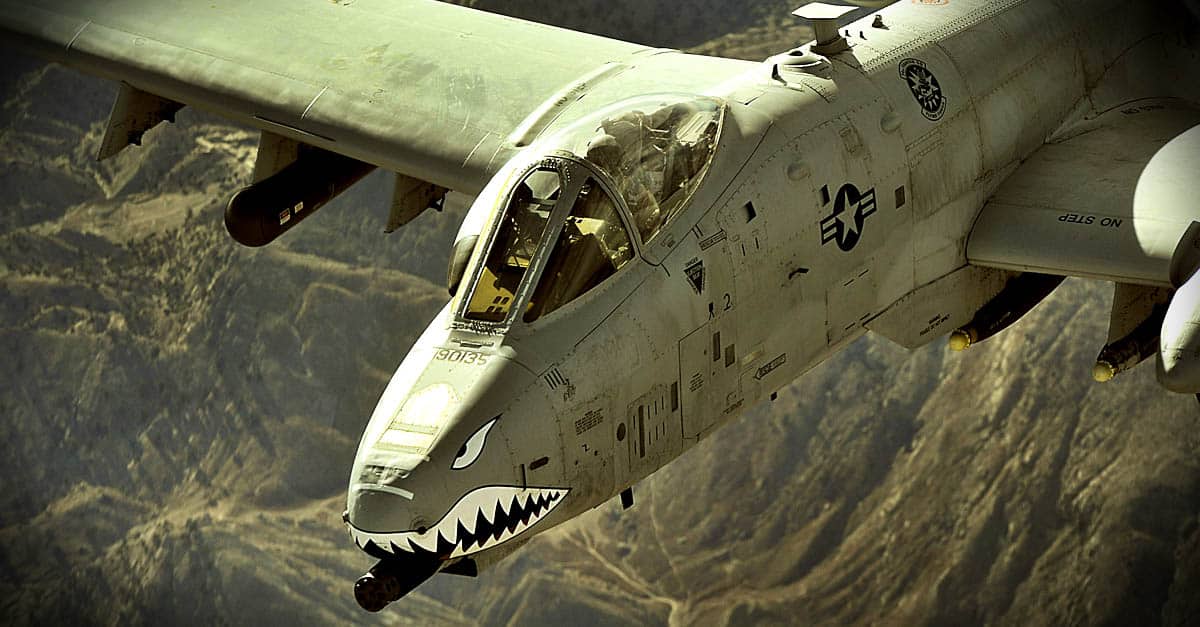
Night Vision

The A-10 is an all-weather, all-day aircraft. They are equipped with Night Vision Imaging Systems and a goggle-compatible seat in the cockpit.
Up Next: More amazing facts about the A-10
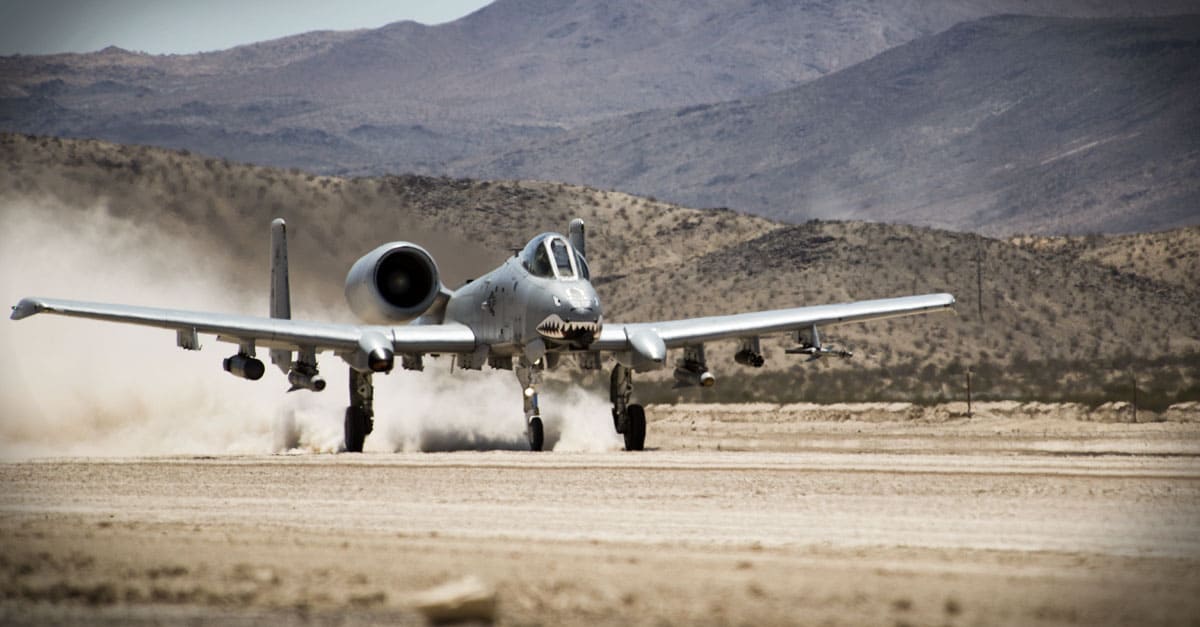
The First A-10

Davis-Monthan Air Force Base, Ariz., received the first-ever production A-10 in October 1975. It didn’t see combat until over 15 years later.
Up Next: More amazing facts about the A-10
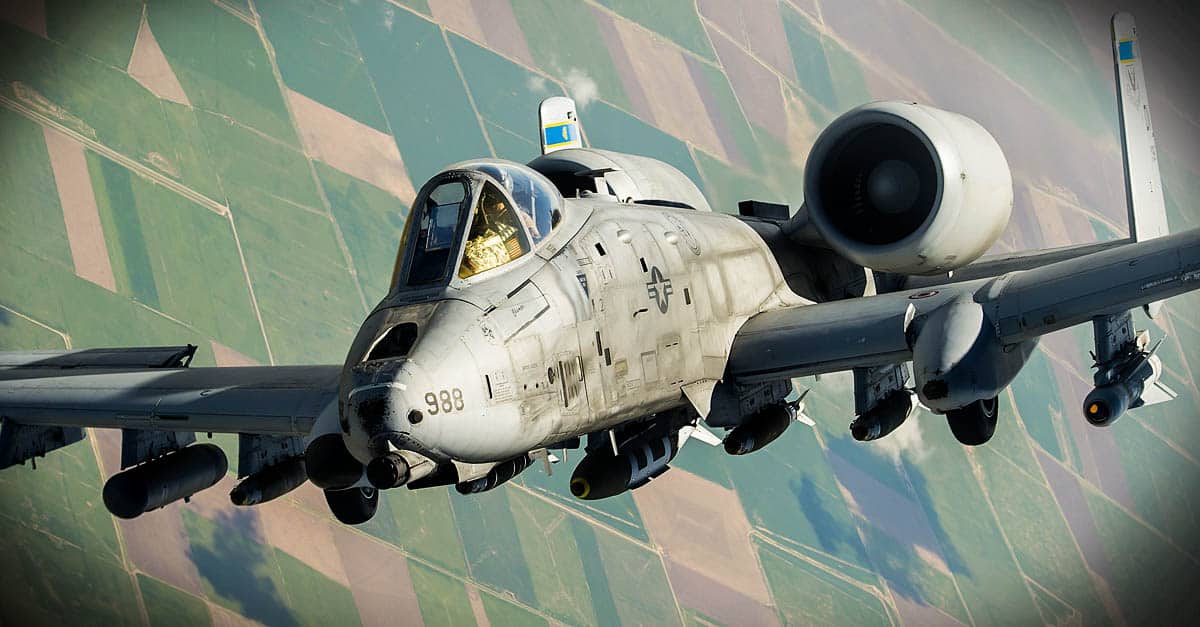
Perfect Attendance

The A-10 has seen combat in every major conflict the United States’ has been involved in since 1991.
Up Next: More amazing facts about the A-10
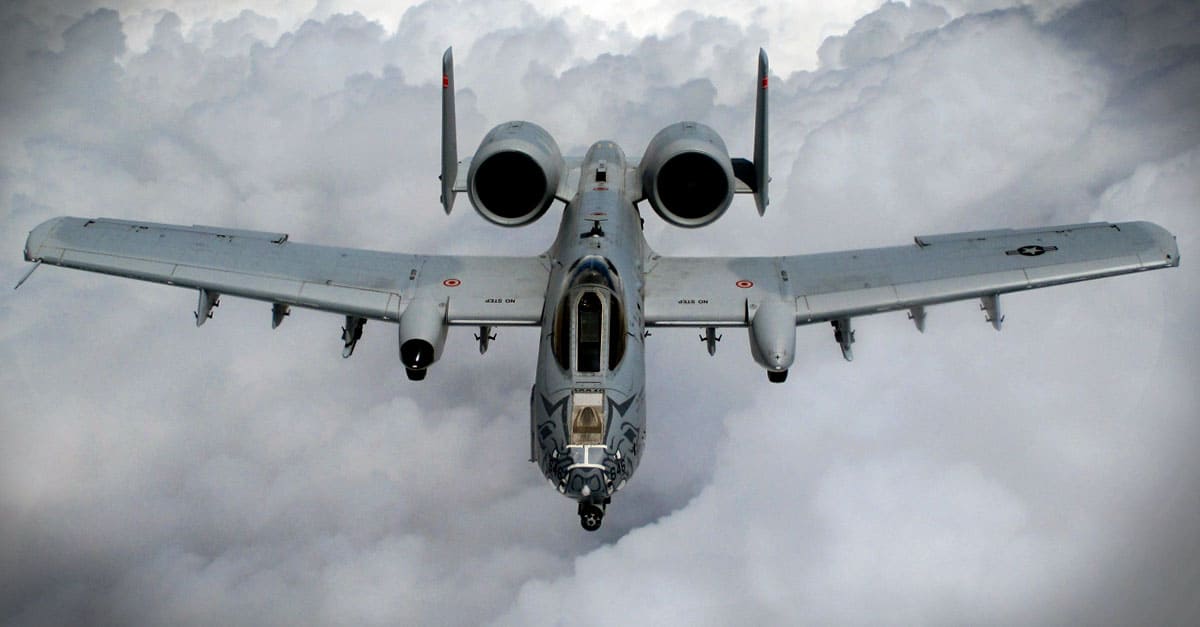
Honeycomb Design

One of the A-10s defining traits is its survivability. A honeycomb panel design make up the leading edges of the wing and tail, making them more resistant to battle damage.
Up Next: More amazing facts about the A-10
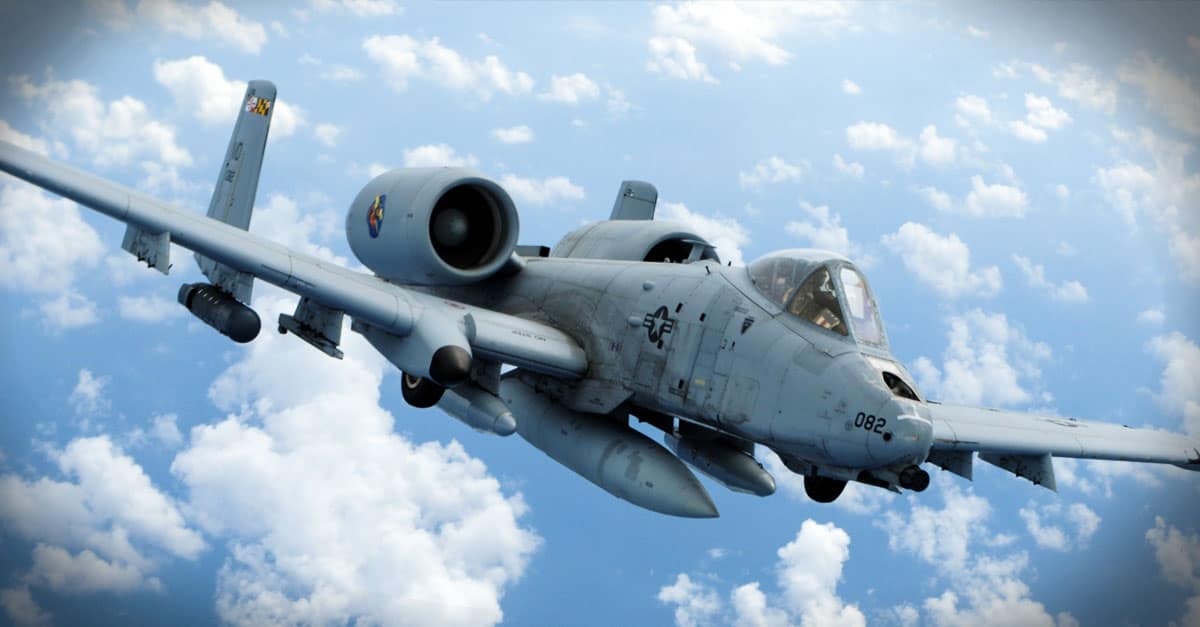
The Fuselage

The front landing gear retracts from under the wings in an offset position, with the rear wheels in line with the fuselage. This set up allows room for the massive machine gun in the nose.
Up Next: More amazing facts about the A-10
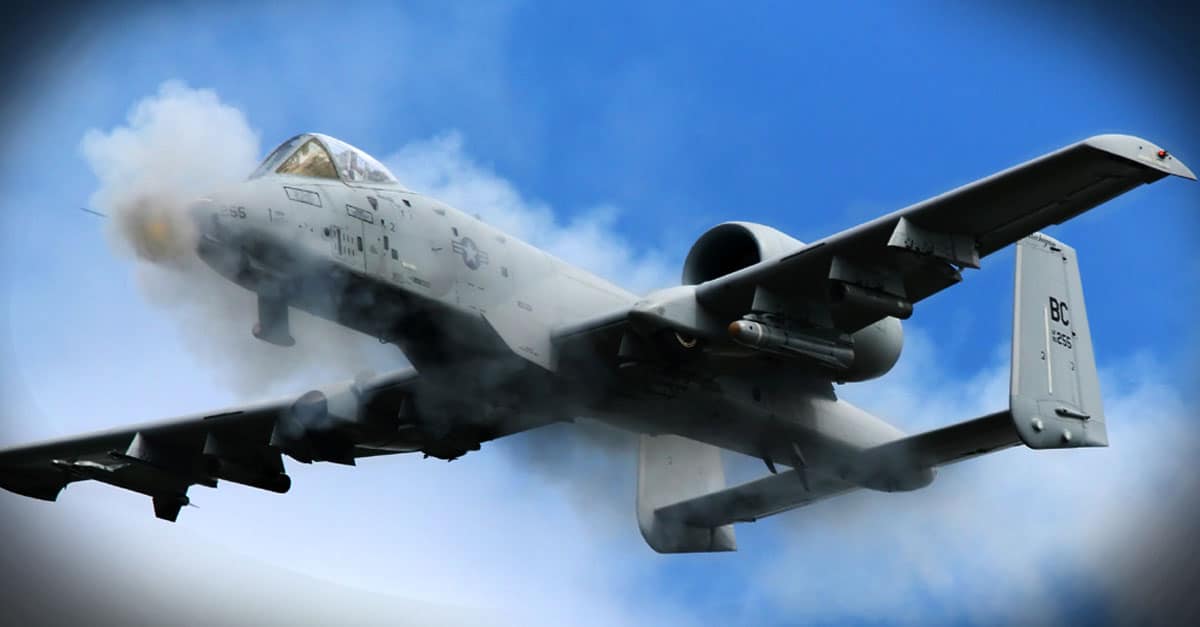
Landin Gear

Even when the wheels are retracted, they protrude outside of the nacelle just a bit. This way if the A-10 has to land with its gear up, it will limit damage to a degree.
Up Next: More amazing facts about the A-10
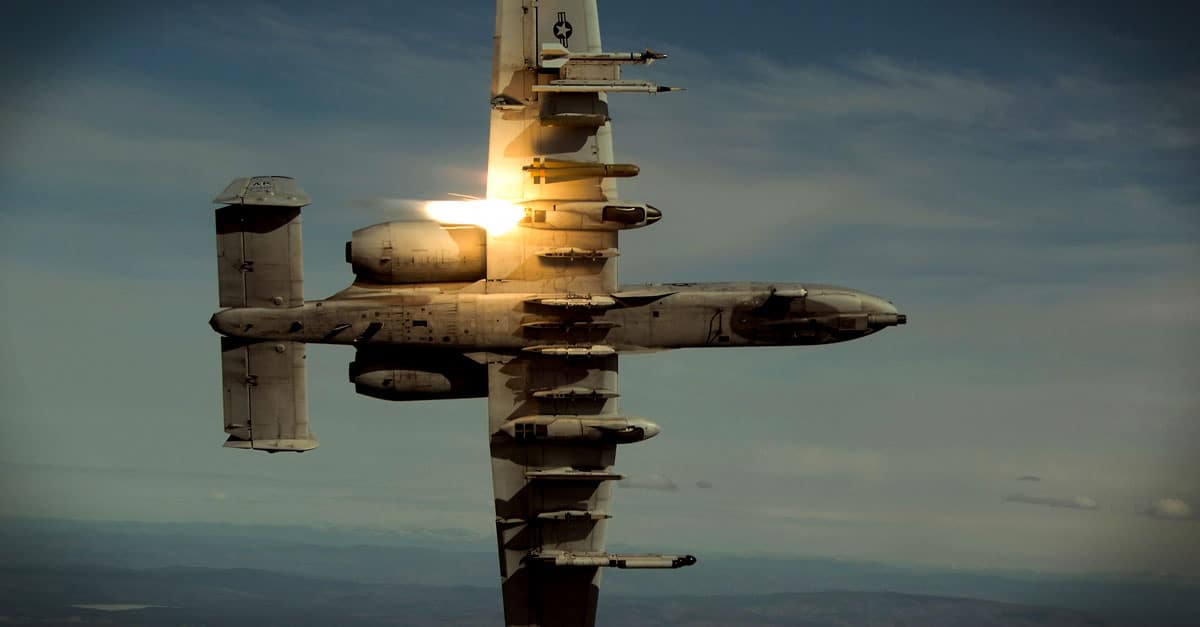
Maneuverability

The left and right ailerons on the A-10 are larger than most any other aircraft. This gives the Thunderbolt more maneuverability than its air-to-ground assault counterparts.
Up Next: More amazing facts about the A-10
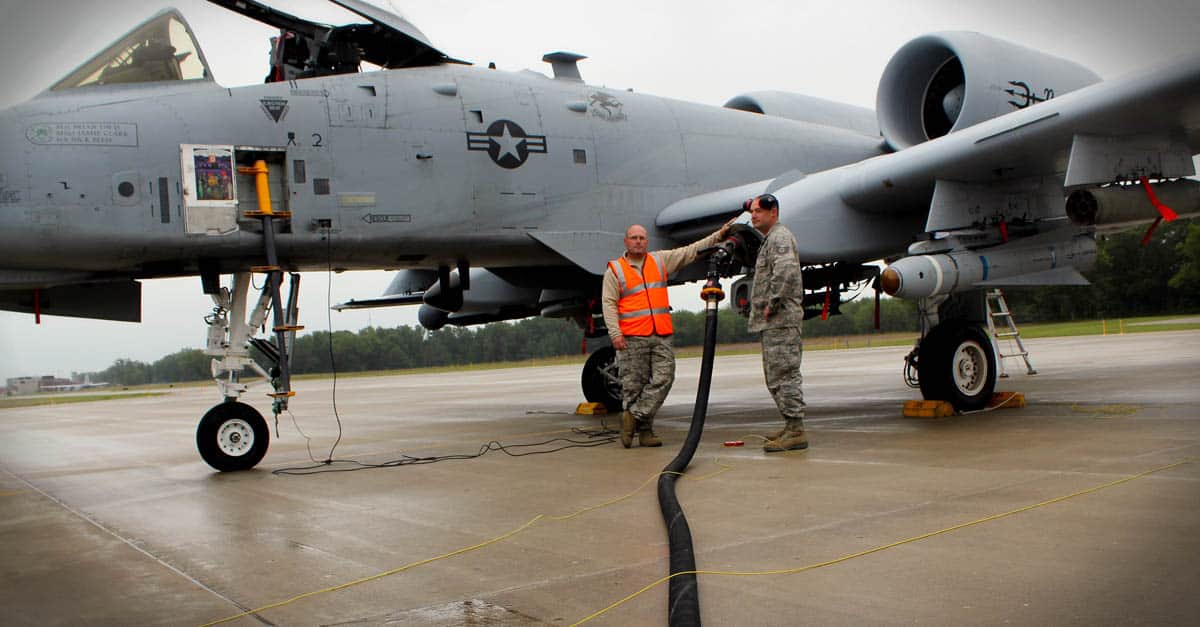
NFL Pilot

An NFL player once piloted the A-10 in the Persian Gulf War. Chad Hennings was a defensive lineman with the Dallas Cowboys after he served in the Air Force.
Up Next: More amazing facts about the A-10
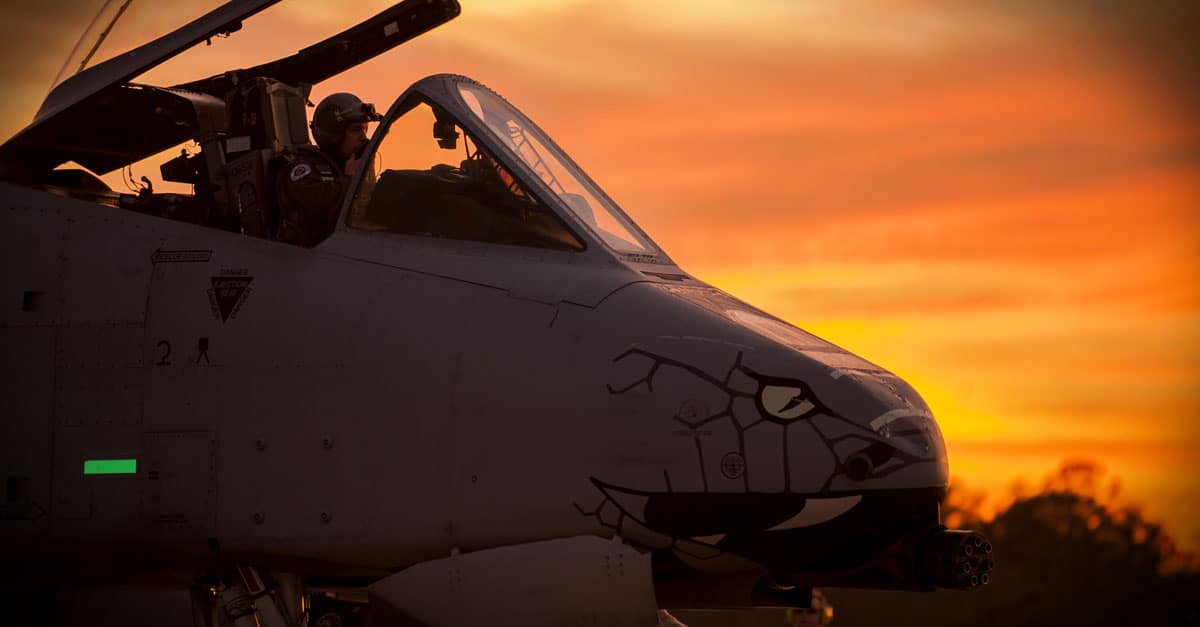
Bugs & Beer

The Gatling gun in the A-10 Thunderbolt fires bullets the size of a beer bottle out of a gun that’s bigger than a Volkswagen Bug.
Up Next: More amazing facts about the A-10
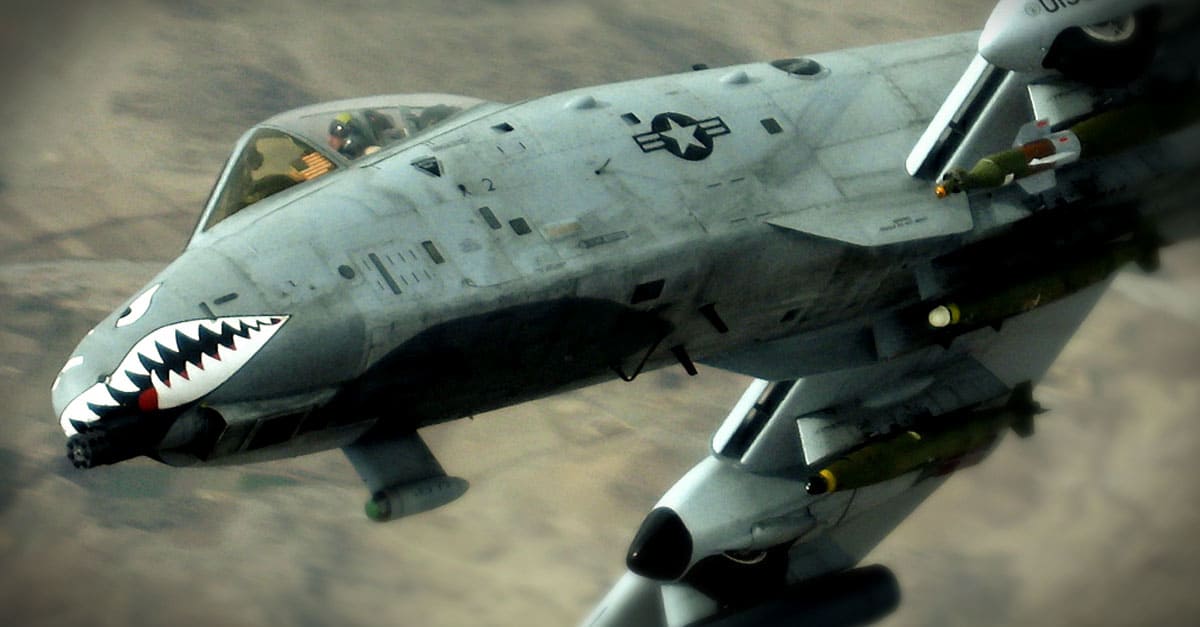
Canon Smoke

The cannon creates so much smoke while it’s being fired that it could choke out a jet engine.
Up Next: More amazing facts about the A-10
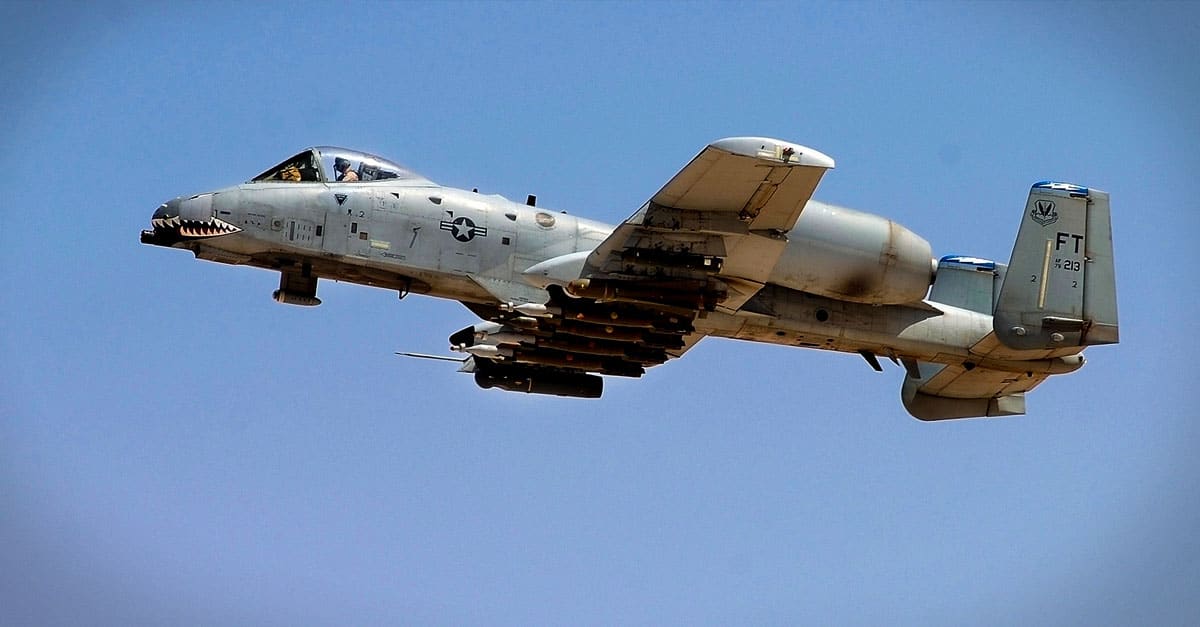
Cross Look

On the second day of the First Iraq War, two A-10’s destroyed 23 Iraqi tanks across three sorties. This impressive display caused the Iraqi soldiers to refer to the A-10 as the “Cross of Death” – because of the plane’s semblance to a cross from underneath.
Up Next: More amazing facts about the A-10
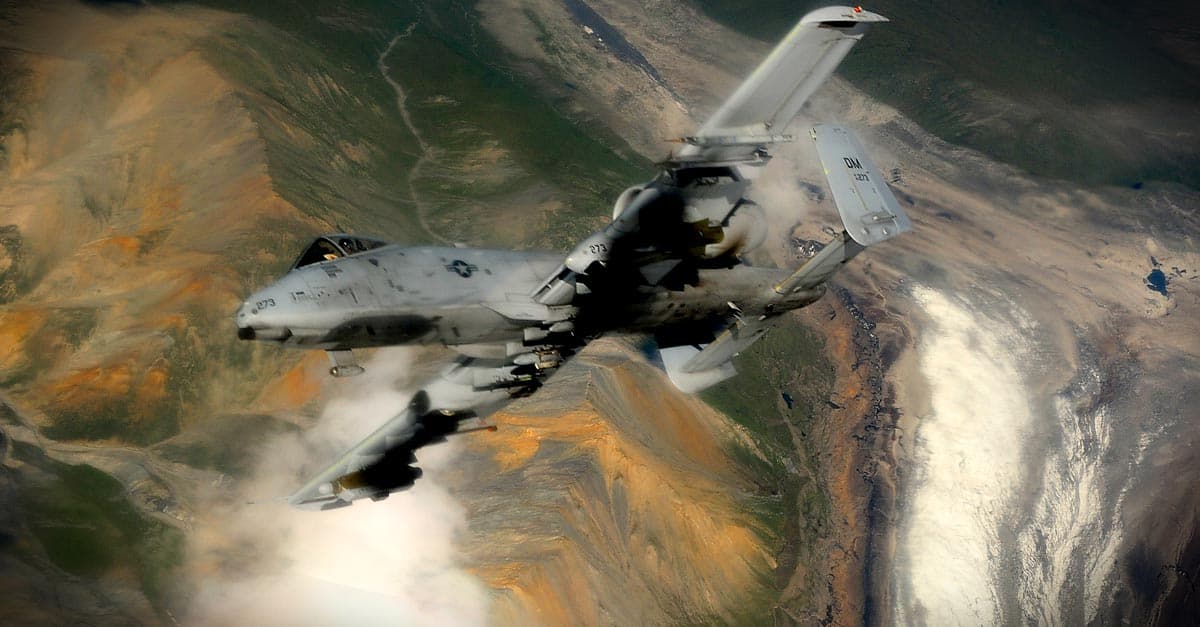
Engine Location

The Air Force nearly chose the Northrop YA-9A over the A-10. The deciding factor was that the engines, mounted to the root of the wings, and the single tail were too vulnerable.
Up Next: More amazing facts about the A-10
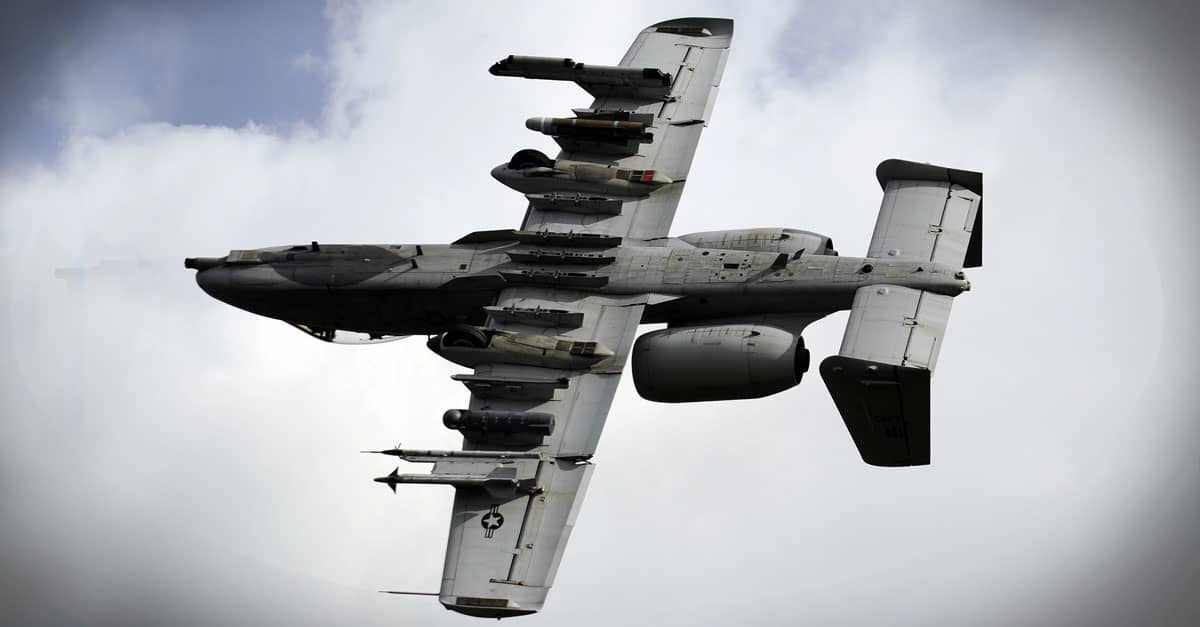
Fuel Capacity

The Warthog has an internal fuel capacity of 10,000 gallons, giving the A-10 an 800-mile range.
Up Next: More amazing facts about the A-10

Wing Replacement

Damaged wing skins can be replaced relatively easy in the field – even with makeshift materials. The production skins aren’t load bearing which means replacing them is simple.
Up Next: More amazing facts about the A-10

Manual Override

In 2003, Capt. Kim Campbell’s A-10 was hit by ground fire and took on extensive damage to the horizontal stabilizer, starboard vertical stabilizer, aft fuselage, and engine. She was able to land the plane safely after switching controls to manual and manually controlling the plane.
Up Next: More amazing facts about the A-10
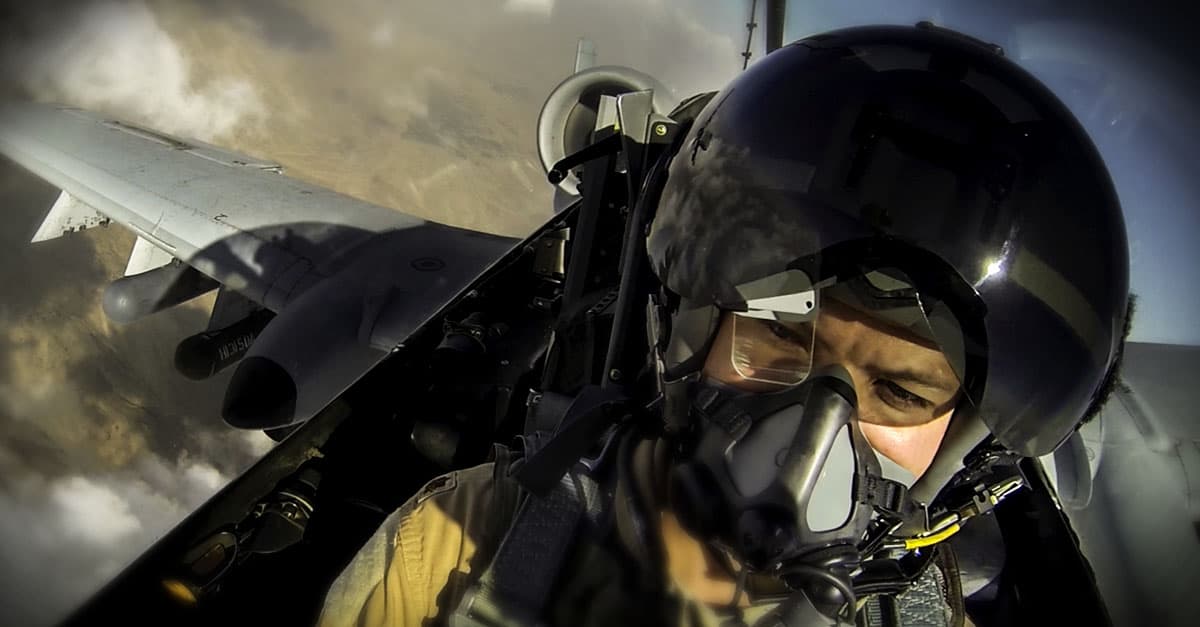
Bubble Canopy

The A-10’s cockpit is outfitted with a bubble canopy that allows 360-degree views of the battlefield. Bombs are released using precise technology but the cannon, for the most part, is fired the good old fashioned way – with a pair of eyeballs.
Up Next: More amazing facts about the A-10

Fuel Cells

The Warthog’s fuel cells are self-sealing and are protected by anti-explosion foam on the inside and the outside.
Up Next: More amazing facts about the A-10
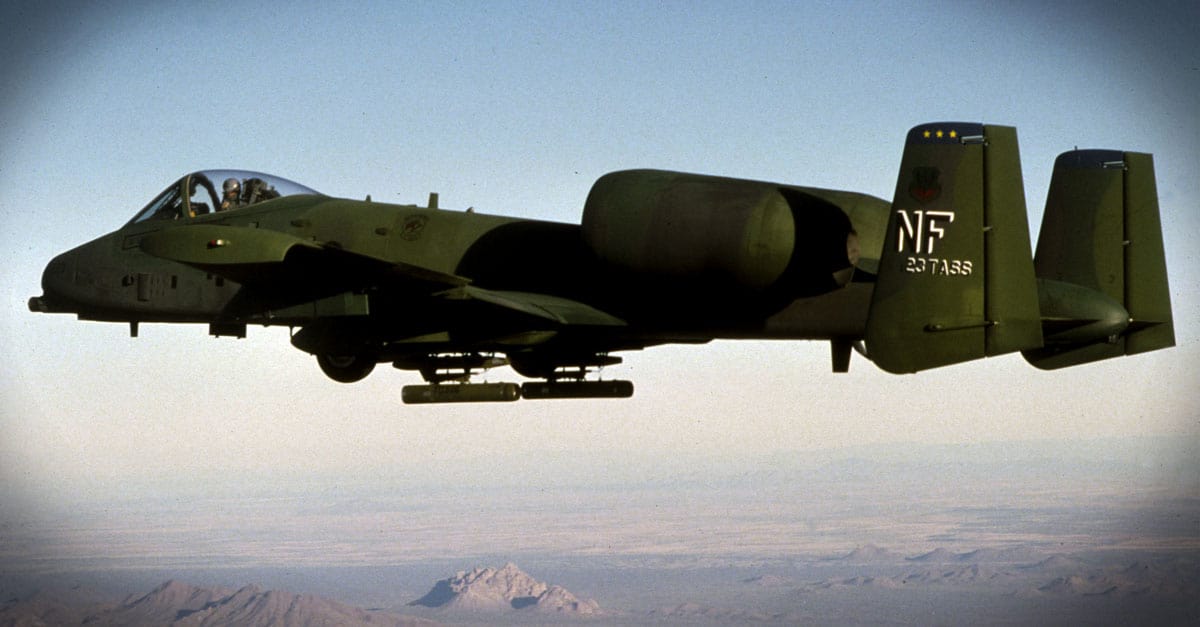
Heads Up Display

The A-10 weapons delivery systems include heads-up displays that indicate altitude, navigation information, dive angle, airspeed, and weapons aiming references.
Up Next: More amazing facts about the A-10
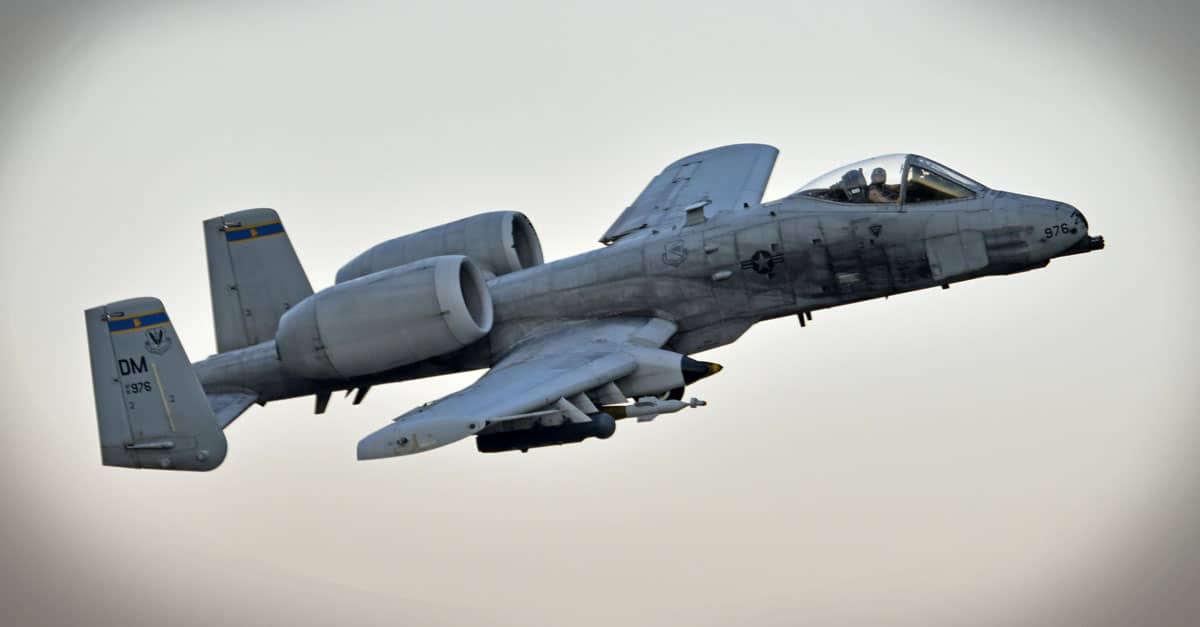
Mission Capable Rate

A-10s had a mission capable rate of 95.7 percent in the Gulf War across its 8,100 sorties. That’s pretty good considering that other active Air Force aircraft, like the B-1 bomber, have an availability rate below 50 percent.
Up Next: More amazing facts about the A-10
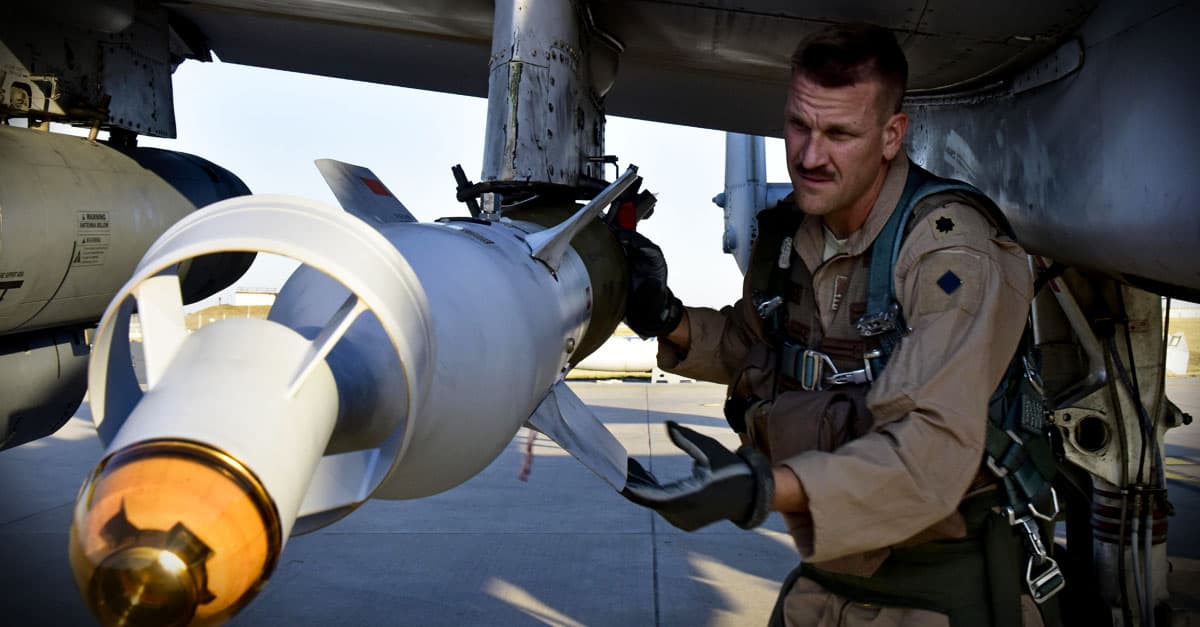
Operation Reduction

As of 2015, the A-10 Thunderbolt has flown about 11 percent of all United States Air Force sorties against ISIS in Syria and Iraq. That’s a reduction from what it flew in Operation Iraqi Freedom and in Afghanistan – about 32 percent of the combat sorties in both theaters.
Up Next: More amazing facts about the A-10
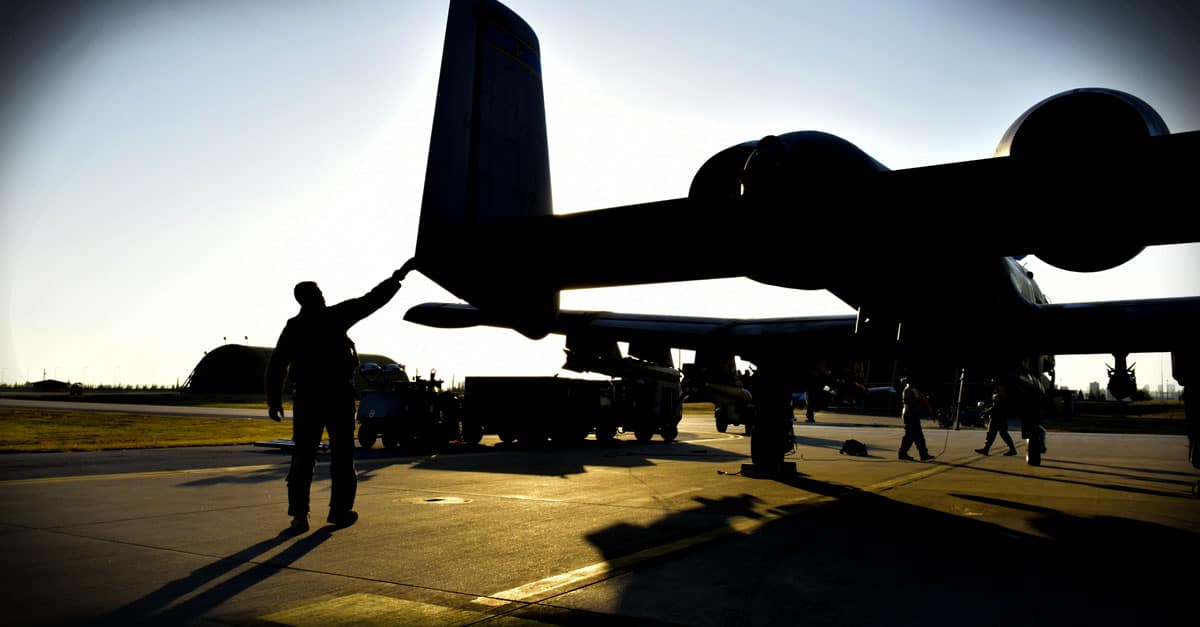
Secondary Role

The A-10’s secondary role is to provide forward air controller support. In this role, the A-10 pilot would direct other attack aircraft in ground supporting roles – all planes used for this tactic are referenced as OA-10.
Up Next: More amazing facts about the A-10
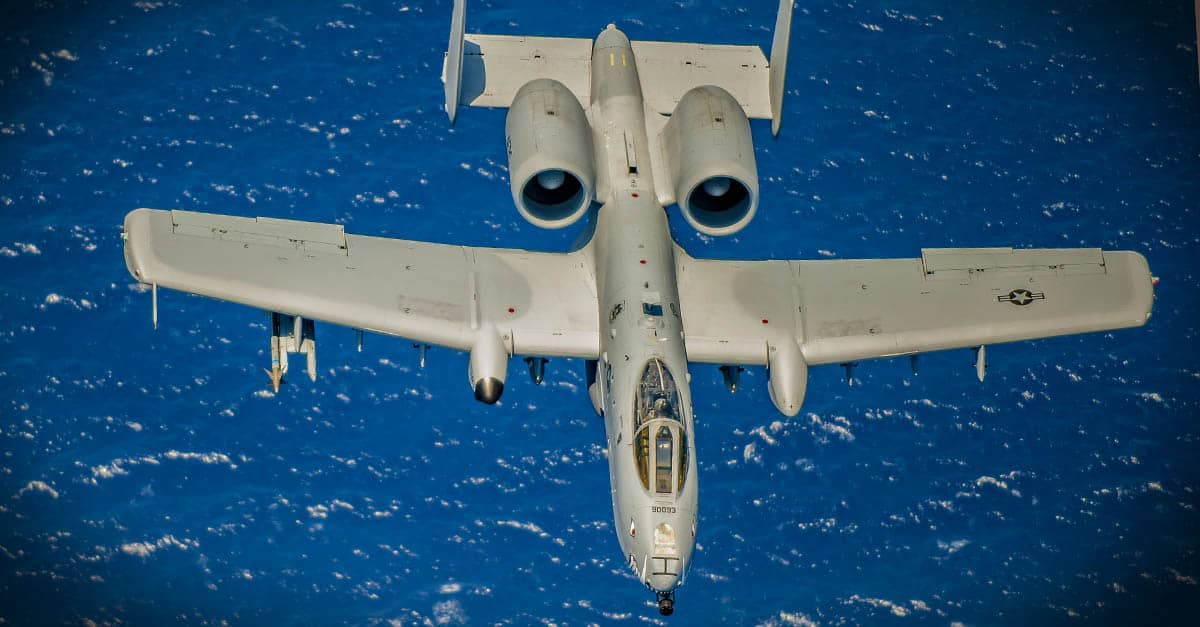
Single Seat Variant

The A-10A single-seat variant was the only model ever produced. In 2005, an upgrade program was implemented to give all A-10 current avionics and precise bombing technology – these updated models are now known as A-10C.
Up Next: More amazing facts about the A-10
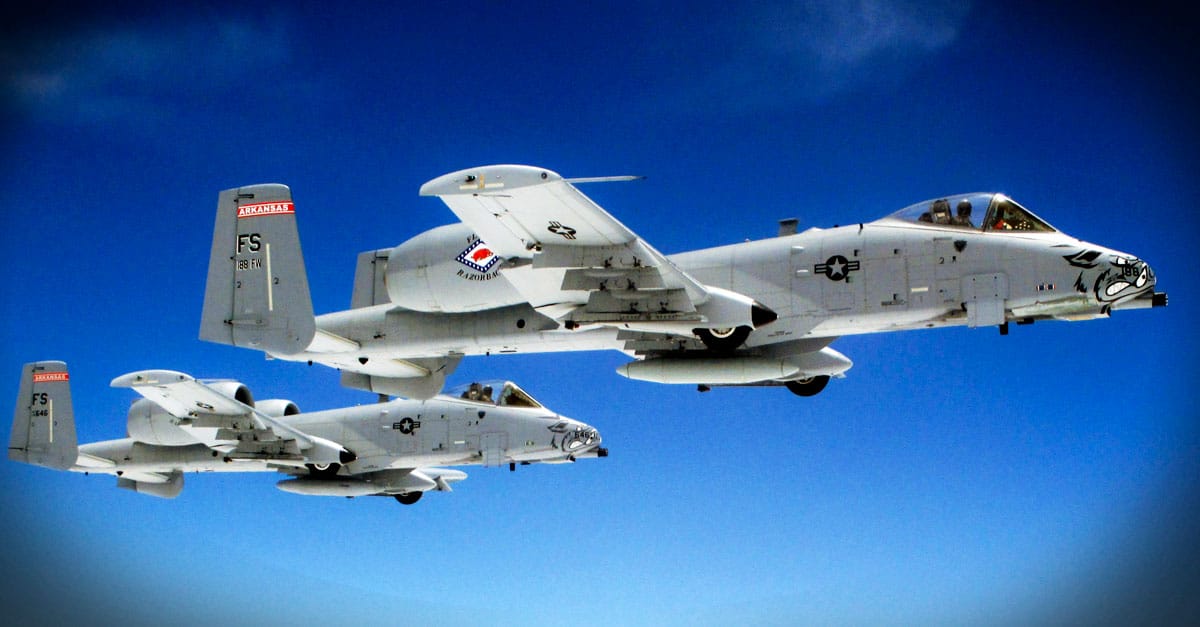
Aircraft Production

715 A-10’s were delivered when production stopped in 1984. At peak production, 12 aircraft were delivered per month.
Up Next: More amazing facts about the A-10

The Recoil

The recoil from the cannon is so powerful that it affects the airplanes’ trajectory. Therefore, the GAU-8/A 30mm cannon was installed slightly off-center to offset that change caused by the recoil.
Up Next: More amazing facts about the A-10
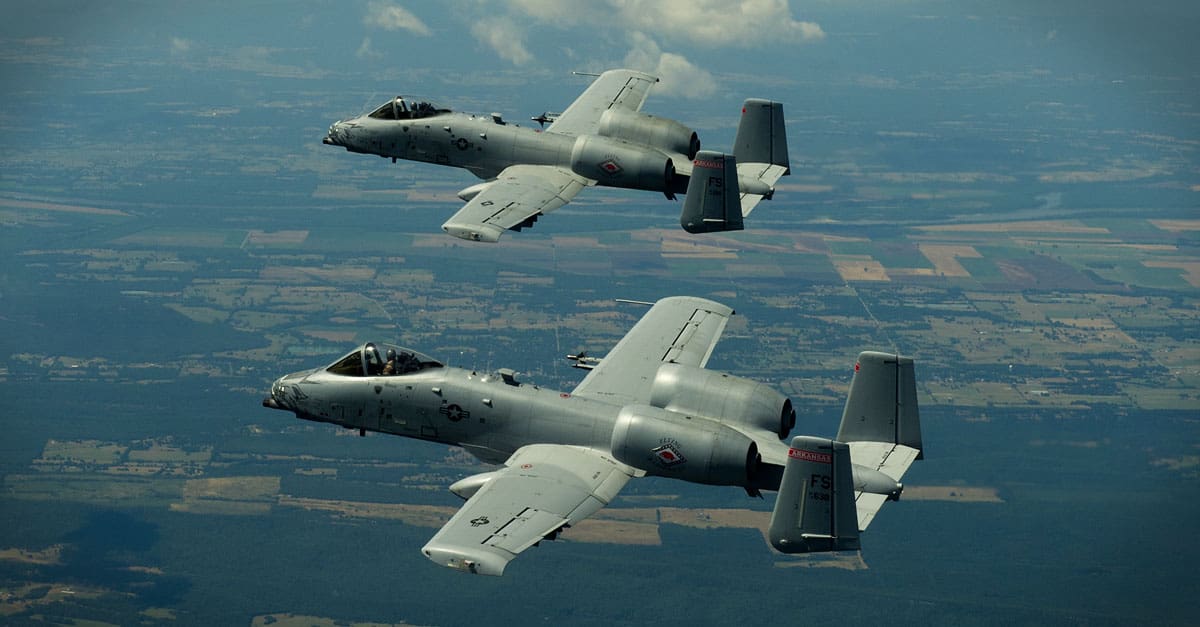
Turning Radius

The front landing gear, which is offset from the center because of the Gatling gun’s massive recoil, causes the A-10 to have an unequal turning radius. Turning to the right on the ground takes less distance than turning left.
Up Next: More amazing facts about the A-10
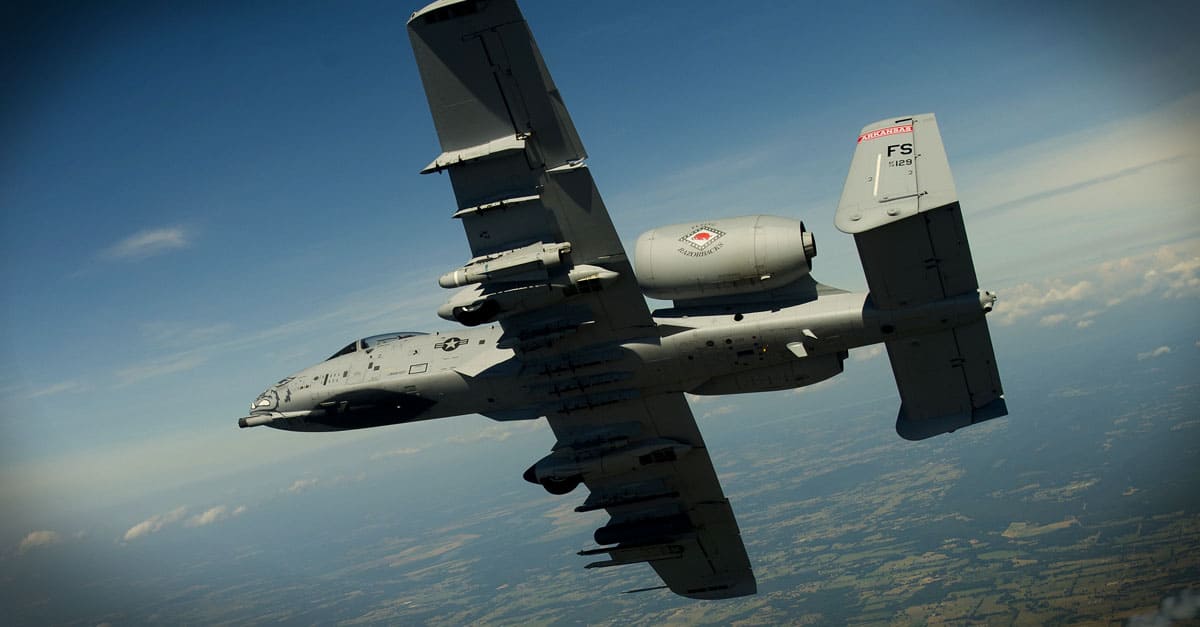
Maintenance In Mind

The A-10 was designed with maintenance and turn-around time during battle in mind. The engines being located high on the plane allow them to continue running while receiving maintenance in a forward location.
Up Next: More amazing facts about the A-10
Camouflage

Because the A-10 Thunderbolt II flies so low to the ground, paint schemes for camouflage are more important here than with other aircraft.
